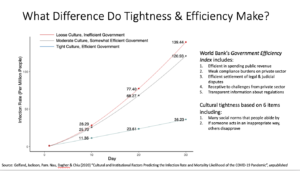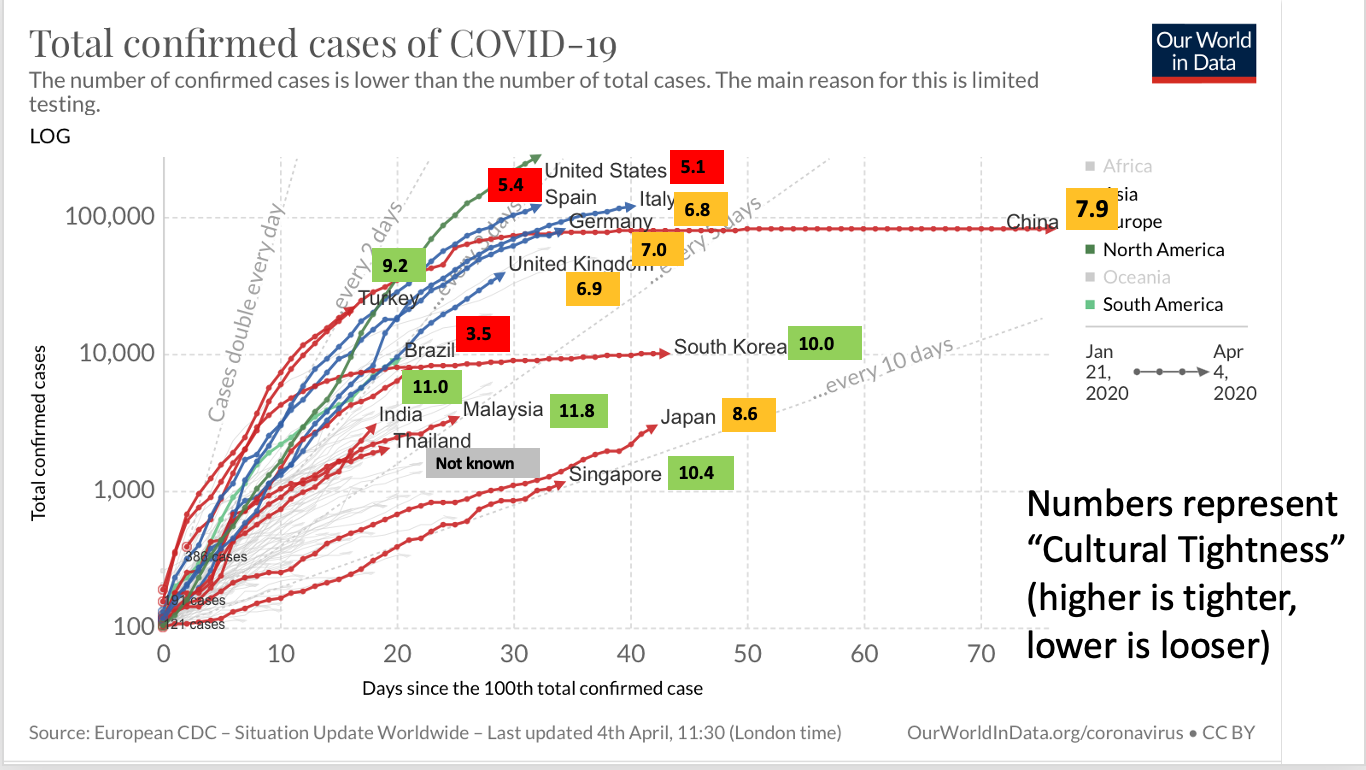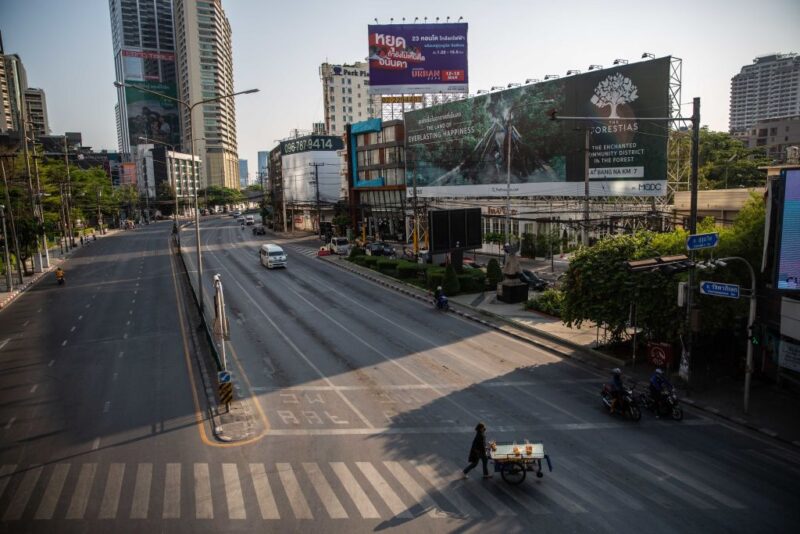Michele Gelfand’s work on Tightness-Looseness (read more here) may have important lessons for the Covid-19 pandemic. Before I look at the differences between countries, let’s consider how to look at the data on the impact of Covid-19.
The first thing to consider is that the Covid-19 virus spreads exponentially. That means that the prevalence of the virus does not follow a normal linear growth path, but rather doubles over a set period of time. If we assume that the cases of Covid-19 double every day, then it moves from 1 case on Day 1 to 2 on Day 2 to 4 on Day 4 and on, reaching 512 cases on Day 10, 524,000 cases on Day 20 and more than 536 million cases on Day 30.
The growth rate accelerates over time, which is what has caught many countries out. Even assuming that the doubling of cases happens every 3 days (the current path of the USA for example) then the number of cases can reach the total population in less than 3 months. Of course, infections reach a peak and then decline, but the point is that the potential for growth is huge and difficult to contain.
Looking at the data is difficult especially if you want to compare countries, as there are a number of concerns with the data:
- How comparable is the testing?
- How many tests are being conducted?
- How is a positive test defined?
- What is the accuracy of the test and what are the number of false positives and false negatives?
- What is the total population of the country?
- What is the sample base of the test (random, suspect cases or those with confirmed symptoms)?
- What is the timing of the tests and the first cases in the country?
- What are the demographics and geography of the country (urban vs rural, population density, etc.)?
- How accurately is the data being reported?
Despite these concerns, it is striking that many countries are following the same trajectory in terms of cases and, sadly, deaths from Covid-19. Perhaps this is the way to make comparisons? Looking at the differences in the growth curves, it appears that Asian countries are following a slower growth trajectory than Western countries.
This is consistent with differences in Tightness-Looseness, as East and South-East Asian countries tend to be “tighter” than Western countries. But is that the only reason for the differences in growth rates?

Michele Gelfand and co-workers have published some initial analysis of the relationship between Tightness-Looseness and Covid-19 impact and conclude that cultural tightness is an important differentiator of how countries are coping, but there is another important determinant. Their analysis shows that government efficiency (as measured by the World Bank’s Government Efficiency Index) is also important in determining health outcomes.
For example, China, Japan, Singapore, South Korea and Taiwan are all relatively “tight” as cultures, but also have governments which have been relatively successful in imposing mitigation measures: testing, trace-contacting, quarantining and complete lock downs.
It remains to be seen if this analysis explains the differences as the crisis continues, but the hypothesis makes sense. Societies that best cope with external events such as this pandemic have strong social norms and governments that are able to impose strict rules when necessary. Is there a lesson for us all that sometimes it makes sense to restrict our freedoms and act for the good of others?
REFERENCES
Michele Gelfand (2018) Rule Makers, Rule Breakers
Gelfand, Jackson, Pam. Nau, Dagher & Chiu (2020) “Cultural and Institutional Factors Predicting the Infection Rate and Mortality Likelihood of the COVID-19 Pandemic”, unpublished






